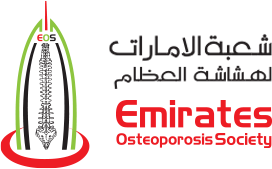Juvenile Osteoporosis
Juvenile osteoporosis is a rare condition that affects children and adolescents, leading to low bone density, increased bone fragility, and a higher risk of fractures during growth. It can be either primary, with no known underlying cause (idiopathic), or secondary to chronic illnesses, nutritional deficiencies, or medications that impair bone metabolism. Unlike adult osteoporosis, which is often associated with aging or hormonal changes, juvenile osteoporosis occurs during the critical years when bones are still developing. This makes early recognition and intervention particularly important, as it can affect a child’s physical growth, mobility, and overall skeletal health into adulthood. While most cases of juvenile osteoporosis are temporary and resolve with age or treatment of the underlying condition, severe or prolonged cases can lead to long-term complications, including permanent deformities and reduced peak bone mass. Timely diagnosis, appropriate management, and supportive care can help children recover bone strength and lead healthy, active lives.
Causes & Risk Factors
Juvenile osteoporosis can be caused by a variety of factors. Primary or idiopathic juvenile osteoporosis has no identifiable underlying disease and is very rare. Secondary causes are more common and include chronic conditions such as juvenile idiopathic arthritis, celiac disease, diabetes, kidney disorders, and hormonal imbalances. Nutritional deficiencies, especially of calcium, vitamin D, and protein, can also impair bone growth. Prolonged use of corticosteroids or anticonvulsants further increases the risk of bone loss in children. Genetic disorders like osteogenesis imperfecta should also be considered in cases with frequent fractures.
Symptoms
The most common signs of juvenile osteoporosis include frequent fractures from mild trauma, particularly in the spine, long bones, or feet. Children may also complain of back pain or bone pain, difficulty walking, or general fatigue. In more severe cases, spinal deformities such as kyphosis or scoliosis may develop due to vertebral compression fractures. Parents may notice that the child avoids physical activity due to pain or fear of injury. These symptoms are often subtle in early stages and can be mistakenly attributed to normal growing pains.
Diagnosis
Diagnosis begins with a thorough clinical history and physical examination. A bone density scan (DEXA) adapted for pediatric use is performed to assess bone mineral content relative to the child’s age and growth. Blood tests are used to evaluate calcium, phosphate, vitamin D, parathyroid hormone levels, and to rule out underlying conditions. X-rays may show fractures or reduced bone thickness. In complex or unclear cases, referral to a pediatric endocrinologist or rheumatologist may be necessary.
Treatment Options
The primary goal of treatment is to address the underlying cause if identified, and to promote healthy bone development. Nutritional optimization is crucial, with sufficient intake of calcium, vitamin D, and protein. Weight-bearing and muscle-strengthening exercises, under medical guidance, are encouraged to stimulate bone growth. In secondary cases, controlling the primary disease and minimizing the use of bone-impacting medications is key. Severe or persistent cases may be treated with medications like bisphosphonates under specialist supervision, although their use in children is limited and closely monitored. A multidisciplinary approach involving pediatricians, nutritionists, physiotherapists, and sometimes orthopedic specialists ensures comprehensive care.
Prevention Tips
Preventing juvenile osteoporosis involves promoting good bone health from early childhood. This includes a balanced diet rich in calcium and vitamin D, regular physical activity, and avoiding factors that impair bone development, such as sedentary behavior or poor nutrition. In children with chronic illnesses or on long-term medications, regular bone monitoring and early intervention are critical. Encouraging safe, active lifestyles and educating families about bone health can help prevent long-term skeletal complications in at-risk children.
